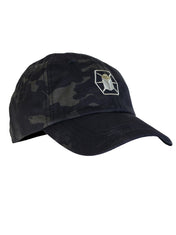Tactical pants are built to withstand anything you throw at them. They also have plenty of storage space for your essential survival gear. But where did these tough pieces of clothing come from?
It turns out there is a rich history behind the popular pants, beginning in the early 20th century. Rooted in military use and transformed into multipurpose clothing, read more about how and why tactical pants still dominate the world today.
The History of Tactical Pants
Since the late 1930s, military uniforms have made tactical pants a major part of their official wear. Even in today’s military dress, tactical pants are an essential item. You can even see them in official military recruitment posters and advertising campaigns.
British Battledress
A solid-color variation of cargo pants, tactical pants were first introduced to the British military in the 1930s. Known as British Battledress, World War II introduced these practical pants to their military uniforms.
They were designed with belt loops, had several pockets sewn in for maps and other tools, and included buttons to secure the shirt. The fabric made it possible for the British soldiers to move freely while also staying warm after being submerged in water.
Paratrooper Uniforms
The U.S. military adopted a similar design to the British uniforms in the mid-1940s. Paratrooper uniforms utilized tactical pants for their ability to access supplies from the moment they hit the ground.
There is not much time to rummage through a backpack in combat, so tactical pants were an instant solution, making long stakeouts much easier to manage. They were especially crucial during D-Day when paratroopers had to act fast while carrying as many supplies as possible.
The soldiers could easily access food rations, weapons, and other tools from the soldier’s uniforms. The materials on the pants helped soldiers wade through marshy areas without weighing them down or impacting their ability to stay warm.
The pants could also handle heavy cartridge belts, haversacks, canteens, weapons, and other gear that needed to stay close to each soldier on the field.
Camouflage
The British later implemented a new design called Disruptive Pattern Material (DPM) to better blend with their environment. You know this as the classic camouflage print design.
It boomed in popularity and was used regularly in combat. This new design was known as CS95 trousers. Different color patterns were made based on soldiers’ environment, such as deep in the forest, jungle, and later deserts.
Later DPM was retired in favor of the Multi-Terrain Pattern, which functioned better in a wider range of terrains and situations. Evolved variations of these designs are still used in today’s military uniform design.
Tactical Pants in Fashion
Like many military designs, tactical pants became popular in mainstream fashion. Like peacoats and aviator glasses, tactical pants evolved into a fashion statement. The 1990s saw a boom in cargo pants in pop culture, though it was more about their style rather than their functionality.
But their usefulness and long-lasting material are why they are still around today. Soon, people discovered how useful they could be when hiking and climbing or other heavy-duty use. Why use a hefty backpack while climbing when you could have extra cordage and supplies in your pants?
If you got stuck without a survival kit, having food rations or other supplies in your pants can be an actual lifesaver. People began to wonder what else could be stored on the body while on a big adventure.
Today’s Tactical Pants
Today’s version of tactical pants has drastically improved since their first iteration nearly a hundred years ago. Some additions include deeper and more pockets, better materials, and efficient padding. Just remember in order to be a true pair of tactical pants, they should also be practical, durable, and versatile.
Who Should Wear Tactical Pants?
Of course, anyone can wear them, but tactical pants are most commonly seen on law enforcement, emergency workers, outdoors people, and military personnel. The extra pockets and strategic design helps those who need to quickly access their gear like handcuffs, a firearm, and other supplies. But the popularity of tactical pants has expanded to outdoor enthusiasts and other survivalists for its design.
Before purchasing tactical pants, research your options. Ask yourself what you will primarily be using them for and what features they need to have.
Will you be crawling on your knees a lot? Pants with extra padding or the ability to attach extra pads in the knee area are available. Many tactical pants are also designed with extra stitches and seating in sensitive areas to prevent ripping, so you will not have to worry about embarrassing moments.
Do you need to blend in with the environment? Choose a pair that matches the terrain you will frequent the most. For desert environments, you will need a khaki or desert camouflage color. For deep forests, consider a deep green color.
Think about the kinds of equipment you will carry on your belt. Are the pants you are looking at able to hold a gun holster or a duty belt? Quality tactical pants should be able to hold everything you need.
Make a list of requirements of what your pair of pants should feature and use that as your Northern Star during your search.
How to Find Your Size
It is important to get the right fit before committing to a pair of tactical pants. Good quality pants should last many years if you take care of them.
Get Ahead with Kitanica’s Tactical Pants
Our line of tactical pants has a loyal customer base for a reason. For over 25 years, we have designed our products with your needs in mind. We have also evolved with the latest innovations in tactical gear to bring you the best on the market. Check out what we have available and make the best choice for you.
Raider Pants
Available in both camo and solid colors, our Raider Pants are, without a doubt, the best on the market today. Made from a combo of nylon and cotton Ripstop, Raider Pants are comfortable and versatile. Featuring 13 pockets, including expandable rear dump pockets, two-lap pockets, side knife pockets, and more, you have enough room to fit everything you need.
The Raiders are also double-reinforced with SuperFabric® for extra padding and protection to avoid compromising rips and protect your knees. You can always purchase our custom padding set designed for our pants and jackets for even more protection.
With G-Form RPT™ Reactive Protection Technology, a blend of PORON® XRD™ material, you can secure the padding with a Velcro® track. The Raiders are available in sizes 30x32 up to 46x37.
Tactical Jeans
Our tactical jeans make casual wear more prepared to take on the day. Available in both blue and black, these sleek six-pocket pants are durable and discreet. Our jeans have seven heavy-duty nylon webbing belt loops and are designed, cut, and sewn using 100 percent American cotton.
We also prevent pocket blowout with ripstop camo and reinforce stress points with bar tracks. Available in sizes 30x30 up to 46x37.
The RSP
If you are looking for breathable pants, the RSP is for you. Whether you need them in khaki, ranger green, wolf grey or classic black, these nylon/cotton pants are made to be breathable and functional.
With eight pockets, pen tubes, CORDURA® Fabric pocket corner reinforcements for knife clips, double layer layered seat and knee areas, and a sleeve for a flashlight or other important EDC items, the RSP can handle just about anything. They are available in sizes 30x30 up to 46x37.
Looking for the perfect pair but still need help? Reach out to us. We will be happy to help you pick out your new gear.
Sources:
Trousers, Battledress, 1937 pattern: Officer's, Home Guard | IWM.org.uk
Survey of U.S. Army | U.S. Army Center of Military History
D-Day Paratrooper Uniform | National Museum of the United States Air Force



